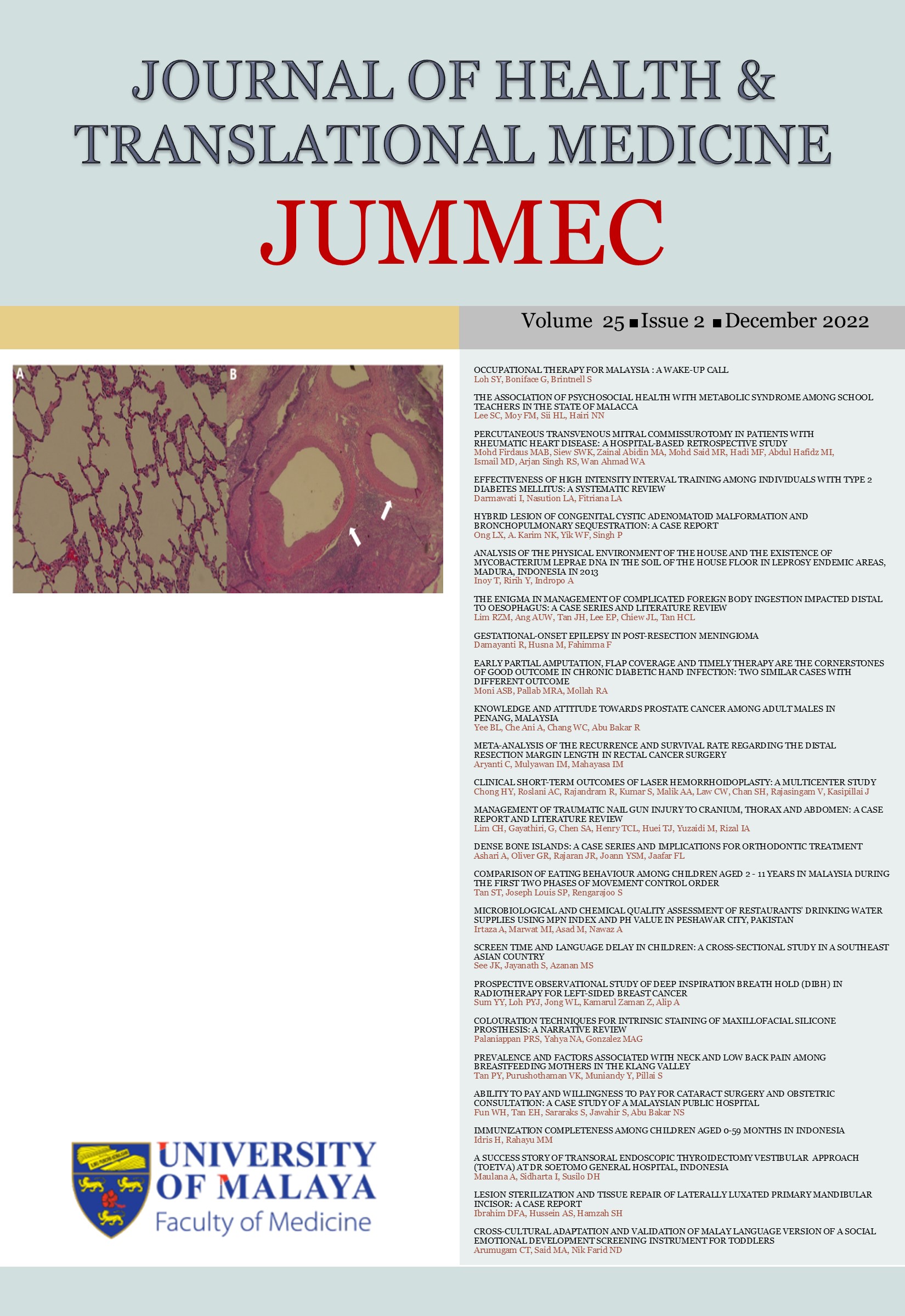ABILITY TO PAY AND WILLINGNESS TO PAY FOR CATARACT SURGERY AND OBSTETRIC CONSULTATION: A CASE STUDY OF A MALAYSIAN PUBLIC HOSPITAL
Received 2022-03-01; Accepted 2022-04-30; Published 2022-11-11
DOI:
https://doi.org/10.22452/jummec.vol25no2.21Keywords:
Ability to pay, Dual practice, Private patient, Public patient, Willingness to payAbstract
Background: Household ability to pay (ATP) and public willingness to pay (WTP) for cataract surgery and obstetric consultation, the two commonly utilised private healthcare services in Malaysian public hospitals are largely unknown. This study assessed the patients’ ATP and the WTP for these services.
Methods: A cross-sectional study was conducted among respondents visiting outpatient clinics in an urban tertiary public hospital. Source of payment for healthcare used by the World Health Survey was used to assess ATP, while contingent valuation was used to elicit respondents’ WTP by asking their WTP for a shorter waiting time for cataract surgery or an obstetric consultation. Chi-square test, Fisher’s exact tests, and binary logistic regression were performed in the analyses.
Results: No significant differences were observed for ATP between public and private respondents. Almost one quarter (23.5%) of total respondents used unaffordable sources for their healthcare services. More than a quarter (26.7%) of the public respondents were willing to pay for private user fees or higher and a proportion of them (14.8%) reported using unaffordable sources for healthcare services. Logistic regression showed that respondents reporting multiple affordable sources of payment were 3.7 times more likely to be willing to pay for these services after adjusting for other factors, compared with the use of a single affordable source.
Conclusion: Although the majority reported using affordable sources of payment for health services, a small fraction claimed the use of unaffordable resources. The use of multiple affordable sources for healthcare payment influences WTP in seeking private services for cataract surgery and obstetric consultation.
Downloads
Downloads
Published
Issue
Section
License
All authors agree that the article, if editorially accepted for publication, shall be licensed under the Creative Commons Attribution License 4.0 to allow others to freely access, copy and use research provided the author is correctly attributed, unless otherwise stated. All articles are available online without charge or other barriers to access. However, anyone wishing to reproduce large quantities of an article (250+) should inform the publisher. Any opinion expressed in the articles are those of the authors and do not reflect that of the University of Malaya, 50603 Kuala Lumpur, Malaysia.


